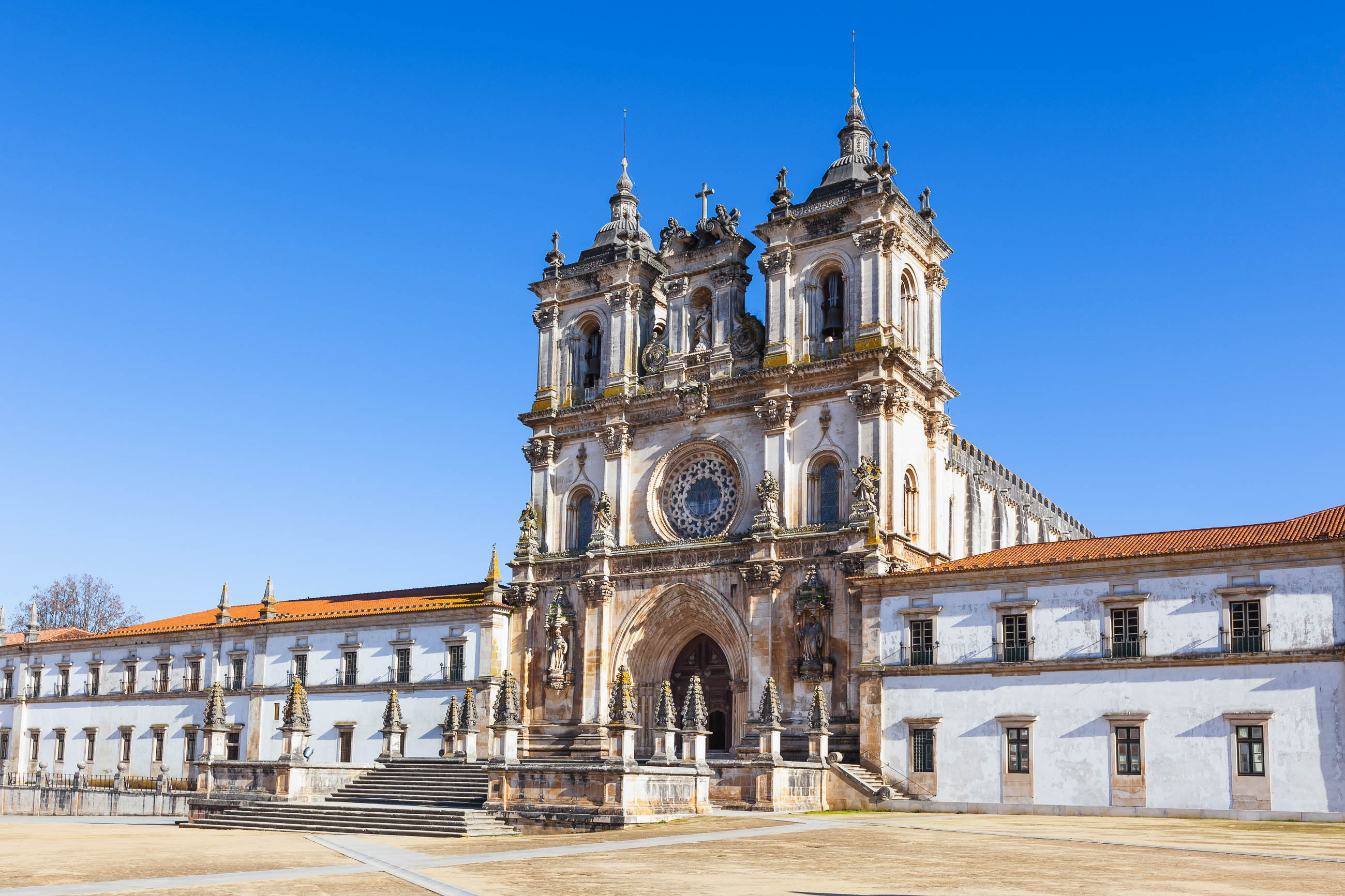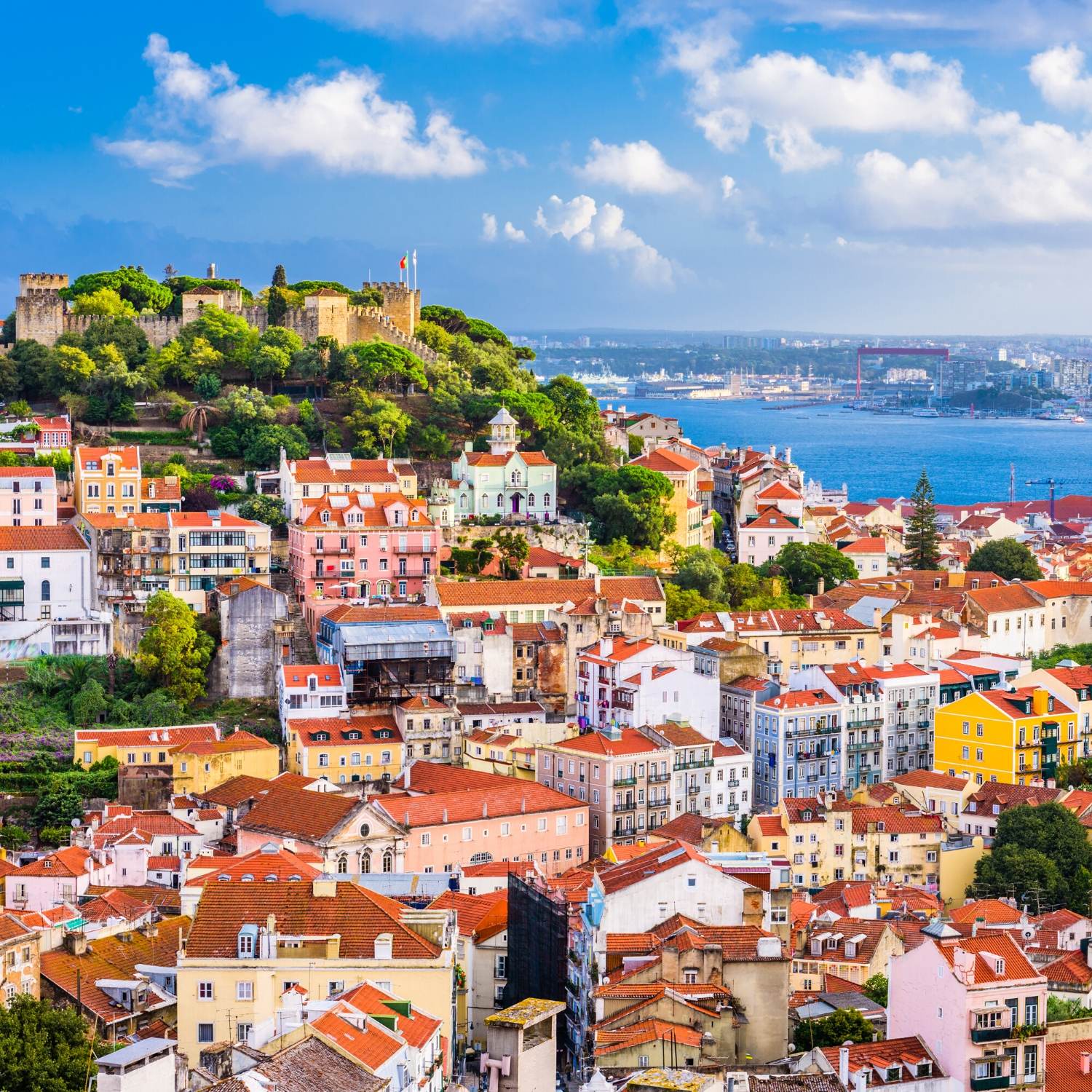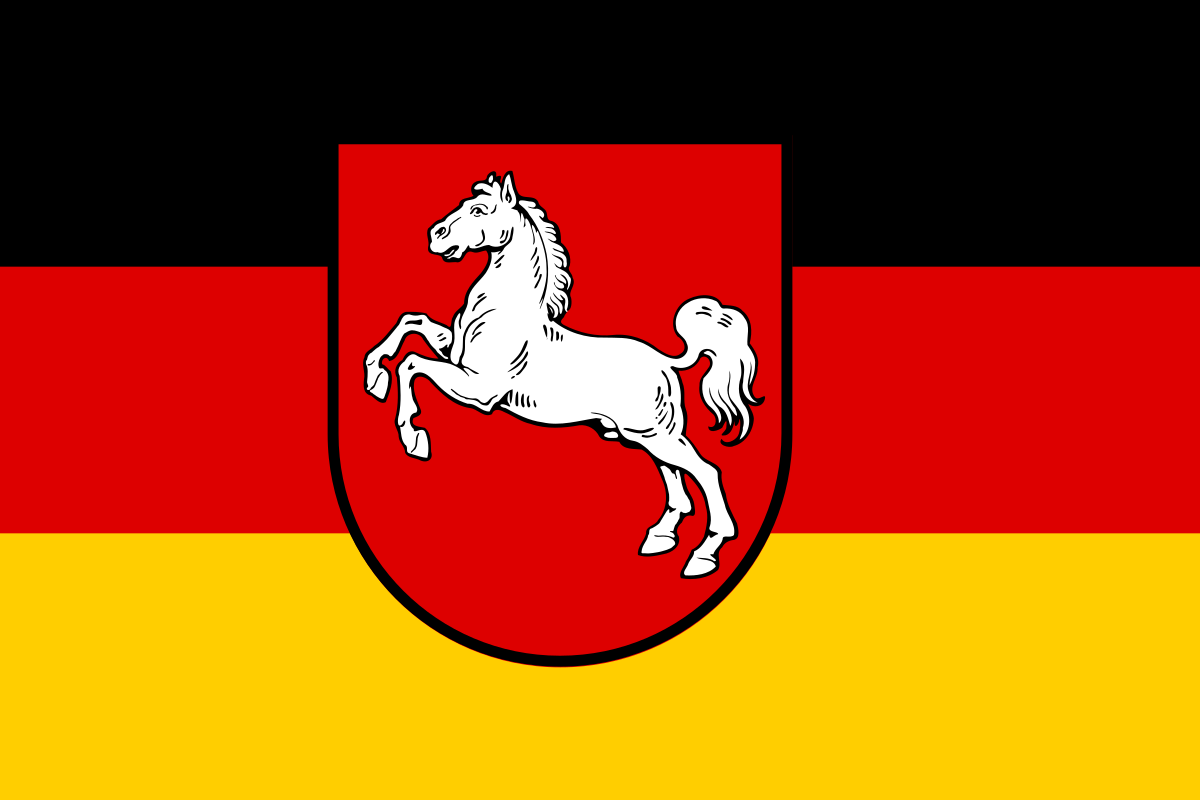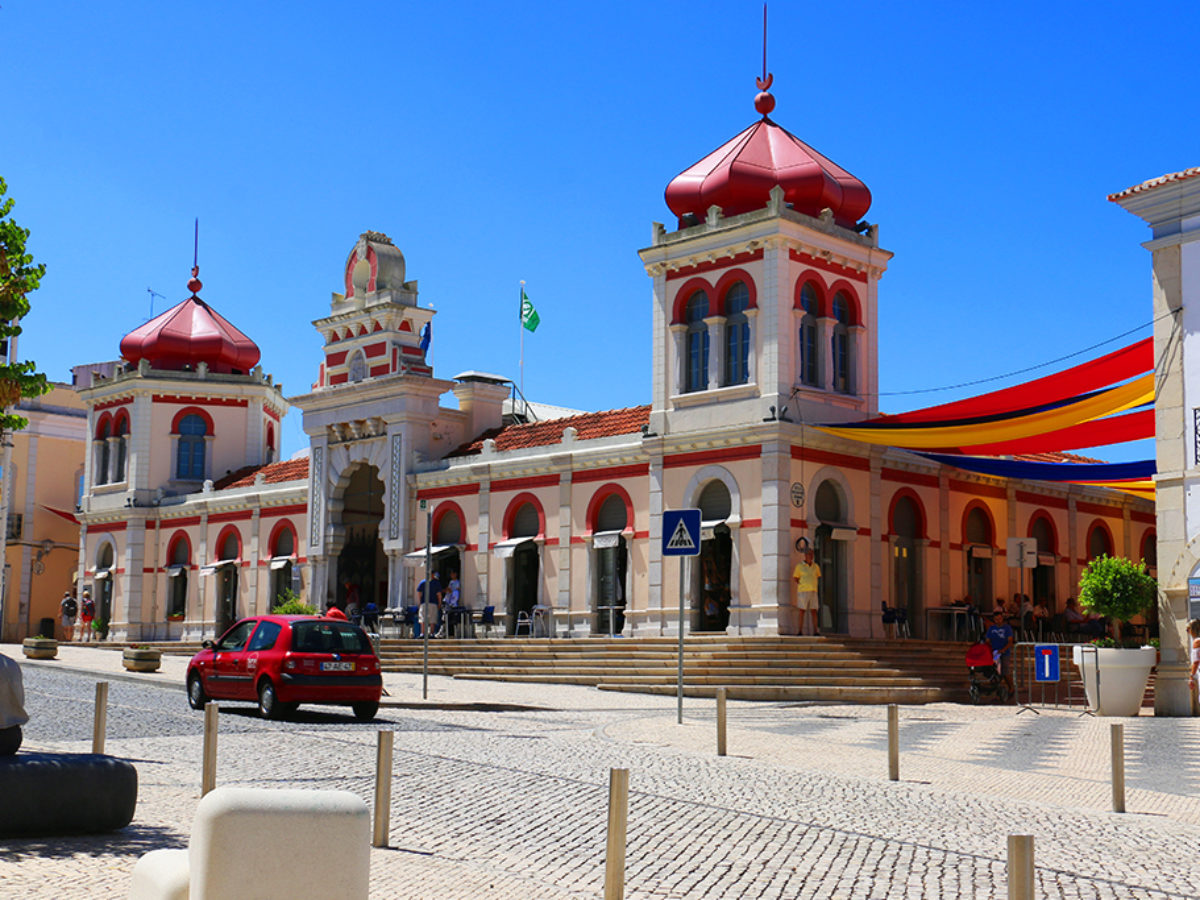
Deutsch-Chinesische Enzyklopädie, 德汉百科
 Portugal
Portugal
 *U.S. foreign territories
*U.S. foreign territories
 Australia
Australia
 China
China
 Germany
Germany
 France
France
 ITU World Championship Series
ITU World Championship Series
 Japan
Japan
 Canada
Canada
 Kasachstan
Kasachstan
 Mexico
Mexico
 New Zealand
New Zealand
 Netherlands
Netherlands
 Austria
Austria
 Portugal
Portugal
 Republic of Korea
Republic of Korea
 Sweden
Sweden
 Switzerland
Switzerland
 Spain
Spain
 South Africa
South Africa
 Hungary
Hungary
 United Arab Emirates
United Arab Emirates
 United States
United States
 United Kingdom
United Kingdom
 United Kingdom
United Kingdom
 Bermuda
Bermuda

 Belgium
Belgium
 Germany
Germany
 France
France
 Italy
Italy
 Luxembourg
Luxembourg
 Netherlands
Netherlands
 Austria
Austria
 Poland
Poland
 Portugal
Portugal

 Religion
Religion
 Switzerland
Switzerland
 Spain
Spain
 Czech Republic
Czech Republic

 Vacation and Travel
Vacation and Travel
 United Kingdom
United Kingdom

圣雅各之路或圣地牙哥朝圣之路(西班牙语:El Camino de Santiago)是前往基督教的圣地之一西班牙加利西亚圣地牙哥康波斯特拉的朝圣之路。主要指从法国各地经由比利牛斯山通往西班牙北部之道路,是联合国教科文组织所登录的世界遗产。
Als Jakobsweg (spanisch Camino de Santiago, galicisch: Camiño de Santiago) wird eine Anzahl von Pilgerwegen durch ganz Europa bezeichnet, die alle das angebliche Grab des Apostels Jakobus in Santiago de Compostela in Galicien (Spanien) zum Ziel haben. In erster Linie wird darunter der Camino Francés verstanden, jene hochmittelalterliche Hauptverkehrsachse Nordspaniens, die von den Pyrenäen zum Jakobsgrab führt und die Königsstädte Jaca, Pamplona, Estella, Burgos und León miteinander verbindet. Diese Route, so wie sie heute noch begangen wird, entstand in der ersten Hälfte des 11. Jahrhunderts.
Ein Pilgerführer des 12. Jahrhunderts, der im Jakobsbuch (lateinisch Liber Sancti Jacobi), der Hauptquelle zur Jakobusverehrung im Hochmittelalter, enthalten ist, nannte für den französischen Raum vier weitere Wege, die sich im Umfeld der Pyrenäen zu einem Strang vereinigen. Nach der Wiederbelebung der Pilgerfahrt nach Santiago de Compostela in den 1970er und 1980er Jahren wurde der spanische Hauptweg 1993 in das UNESCO-Welterbe aufgenommen. 1998 erhielten auch die vier im Liber Sancti Jacobi beschriebenen französischen Wege diesen Titel. Zuvor schon hatte der Europarat im Jahre 1987 die Wege der Jakobspilger in ganz Europa zur europäischen Kulturroute erhoben und ihre Identifizierung empfohlen.
サンティアゴ・デ・コンポステーラの巡礼路(サンティアゴ・デ・コンポステーラのじゅんれいろ)は、キリスト教の聖地であるスペイン、ガリシア州のサンティアゴ・デ・コンポステーラへの巡礼路。おもにフランス各地からピレネー山脈を経由しスペイン北部を通る道を指す。
The Camino de Santiago (Latin: Peregrinatio Compostellana, "Pilgrimage of Compostela"; Galician: O Camiño de Santiago),[1] known in English as the Way of Saint James among other names,[2][3][4] is a network of pilgrims' ways or pilgrimages leading to the shrine of the apostle Saint James the Great in the cathedral of Santiago de Compostela in Galicia in northwestern Spain, where tradition has it that the remains of the saint are buried. Many follow its routes as a form of spiritual path or retreat for their spiritual growth. It is also popular with hiking and cycling enthusiasts and organized tour groups.
The French Way (Camino Francés) and the Routes of Northern Spain are the courses which are listed in the World Heritage List by UNESCO.
Le pèlerinage de Saint-Jacques-de-Compostelle ou pèlerinage de Compostelle est un pèlerinage catholique dont le but est d'atteindre le tombeau attribué à l'apôtre saint Jacques le Majeur, situé dans la crypte de la cathédrale de Saint-Jacques-de-Compostelle en Galice (Espagne). C'est un « Chemin semé de nombreuses démonstrations de ferveur, de pénitence, d'hospitalité, d'art et de culture, qui nous parle de manière éloquente des racines spirituelles du Vieux Continent »1.
Créé et instauré après l'invention des reliques de Jacques de Zébédée au début du IXe siècle, le pèlerinage de Compostelle devient à partir du XIe siècle un grand pèlerinage de la Chrétienté médiévale. Mais c'est seulement après la prise de Grenade en 1492, sous le règne de Ferdinand d'Aragon et d'Isabelle la Catholique, que le pape Alexandre VI déclare officiellement Saint-Jacques-de-Compostelle lieu d'un des « trois grands pèlerinages de la Chrétienté », avec ceux de Jérusalem et de Rome.
Récemment, l'interprétation du sanctuaire catholique subit une évolution doctrinale : le mot « tombeau » a disparu des discours des derniers papes depuis Jean-Paul II. Jean-Paul II parlant du « mémorial de saint Jacques », sans utiliser le mot « reliques » et Benoît XVI disant simplement que la cathédrale Saint-Jacques-de-Compostelle « est liée à la mémoire de saint Jacques ».
Les chemins de Compostelle, qui correspondent à plusieurs itinéraires en Espagne et en France, ont été déclarés en 1987 « Premier itinéraire culturel » par le Conseil de l'Europe. Depuis 2013, les chemins de Compostelle attirent plus de 200 000 pèlerins chaque année, avec un taux de croissance de plus de 10 % par an. Les pèlerins viennent essentiellement à pied, et souvent de villes proches (demandant peu de jours de marche pour atteindre Santiago). Le Camino francés rassemble les 2/3 des marcheurs, mais les autres chemins « mineurs » connaissent une croissance de leur fréquentation supérieure au chemin traditionnel. Les mois d'été sont les plus fréquentés par les pèlerins, et les pèlerins espagnols y sont majoritaires (les pèlerins d'origine étrangère dominent le reste de l'année).
Il Cammino di Santiago di Compostela è il lungo percorso che i pellegrini fin dal Medioevo intraprendono, attraverso la Francia e la Spagna, per giungere al santuario di Santiago di Compostela, presso cui ci sarebbe la tomba dell'Apostolo Giacomo il Maggiore.
Le strade francesi e spagnole che compongono l'itinerario sono state dichiarate Patrimonio dell'umanità dall'UNESCO. Si tratta grossomodo (a seconda del sentiero e dell'allenamento) di un percorso di 800 km per la durata di 1 mese.
El Camino de Santiago o peregrinación de Santiago de Compostela es una peregrinación católica de origen medieval cuyo propósito es llegar a la tumba atribuida al apóstol Santiago el Mayor, situada en la cripta de la catedral de Santiago de Compostela en Galicia (España). Ha sido, y sigue siendo, la ruta más antigua, más concurrida y más celebrada del viejo continente. Se trata de un «camino sembrado de numerosas manifestaciones de fervor, de arrepentimiento, de hospitalidad, de arte y de cultura, que nos habla de manera elocuente de las raíces espirituales del Viejo Continente».1
Creado e instaurado después del descubrimiento de las reliquias de Santiago el Zebedeo a principios del siglo IX, la peregrinación a Compostela se convirtió desde el siglo XI en una de las grandes peregrinación de la cristiandad medieval. Aunque hasta después de la caída de Granada en 1492, durante el reinado de Fernando de Aragón e Isabel la Católica, Santiago de Compostela no será declarada oficialmente por el papa Alejandro VI como lugar de una de las «tres grandes peregrinaciones en la cristiandad», con Jerusalén y Roma con sus vías romeas. Después el Camino fue un tanto olvidado y en la actualidad ha vuelto a tomar un gran auge, siendo recorrido por caminantes y andadores de todo el mundo que a pie, corriendo, en bicicleta o a caballo, emprenden una experiencia que entremezcla la antigua devoción religiosa con la aventura, el encuentro y el conocimiento personal, el deporte y disfrute de la naturaleza y la cultura. Es parte del sendero de larga distancia GR-65.
Recientemente, la interpretación del santuario católico ha sufrido una evolución doctrinal: la palabra tumba ha desaparecido del discurso de los últimos papas desde Juan Pablo II, que habló del «memorial del santo Santiago», sin usar la palabra «reliquias», y de Benedicto XVI que dijo simplemente que la catedral de Santiago de Compostela «está vinculada a la memoria de Santiago».
Los Caminos de Santiago, que corresponden a varios itinerarios en España y en Francia, fueron declarados en 1987 el primer «Itinerario Cultural Europeo» por el Consejo de Europa.
El Camino de Santiago Francés y las rutas francesas del Camino fueron declarados por la Unesco Patrimonio de la Humanidad en 1993 y 1998 respectivamente.23 La declaración española fue ampliada en 2015 incluyendo el Camino Primitivo, el Camino Costero, el Camino vasco-riojano y el Camino de Liébana.4
En 2004 la Fundación Príncipe de Asturias le concedió el Premio Príncipe de Asturias de la Concordia «como lugar de peregrinación y de encuentro entre personas y pueblos que, a través de los siglos, se ha convertido en símbolo de fraternidad y vertebrador de una conciencia europea».5 Además, ha recibido el título honorífico de «Calle mayor de Europa».6
Desde 2013, atrae a más de 200 000 peregrinos cada año, con una tasa de crecimiento de más del 10 % anual. Los peregrinos llegan principalmente a pie, y a menudo de las ciudades cercanas (necesitando unos pocos días para llegar a Santiago). El Camino francés recoge 2/3 de los caminantes, pero otros caminos menores están experimentando un crecimiento incluso mayor que el camino tradicional. Los meses de verano son los más frecuentados por los peregrinos, especialmente por los peregrinos españoles, siendo en su mayoría peregrinos procedentes del extranjero los que dominan el resto del año.
Путь Свято́го Иа́кова, Эль Ками́но де Сантья́го (исп. El Camino de Santiago) — паломническая дорога к предполагаемой могиле апостола Иакова в испанском городе Сантьяго-де-Компостела, главная часть которой пролегает в Северной Испании. Благодаря своей популярности и разветвлённости этот маршрут оказал большое влияние на распространение культурных достижений в эпоху Средневековья. C 1993 года входит в число памятников всемирного наследия ЮНЕСКО.
Во второй половине XX века значительный вклад в дело восстановления паломнического маршрута внёс Элиас Валинья Сампедро, благодаря стараниям которого, начиная с 1980-х годов, популярность маршрута вновь начала возрастать: так, если в 1978 году по нему прошли всего 13 человек[1], то в 2009 — более 145 тысяч[2]. Определённую роль в популяризации Пути Святого Иакова сыграл роман Пауло Коэльо «Дневник мага», изданный в 1987 году[3].




 Argentina
Argentina
 Barbados
Barbados
 Bolivia
Bolivia
 Brazil
Brazil
 Chile
Chile
 Columbia
Columbia
 Costa Rica
Costa Rica
 Dominikanische Republik
Dominikanische Republik
 Ecuador
Ecuador
 Jamaika
Jamaika
 Development Bank of Latin America and the Caribbean
Development Bank of Latin America and the Caribbean
 Development Bank of Latin America and the Caribbean
Development Bank of Latin America and the Caribbean
 Sergio Díaz-Granados Guida
Sergio Díaz-Granados Guida
 Mexico
Mexico
 Panama
Panama
 Paraguay
Paraguay
 Peru
Peru
 Portugal
Portugal
 Spain
Spain
 Trinidad und Tobago
Trinidad und Tobago
 Uruguay
Uruguay
 Venezuela
Venezuela

Die Lateinamerikanische Entwicklungsbank (portugiesisch: Corporação Andina de Fomento (CAF), spanisch: Banco de Desenvolvimento da América Latina, englisch: Development Bank of Latin America) ist eine Entwicklungsbank, deren Aufgabe es ist, die nachhaltige Entwicklung und die regionale Integration durch die Finanzierung von Projekten im öffentlichen und privaten Sektor in Lateinamerika sowie durch technische Zusammenarbeit und andere spezialisierte Dienstleistungen zu fördern[1].
Die am 7. Februar 1968 gegründete CAF, der derzeit 19 Mitgliedsländer aus Lateinamerika, der Karibik und Europa sowie 13 Privatbanken angehören, ist eine der wichtigsten Quellen für multilaterale Finanzierungen und ein wichtiger Wissensgenerator für die Region[2].
Die CAF hat ihren Hauptsitz in Caracas, Venezuela. Darüber hinaus unterhält sie Repräsentanzen in Madrid, Lima, Brasilia, Bogota, Buenos Aires, Quito, Panama, Montevideo, Asuncion, Mexiko-Stadt, Port of Spain und La Paz.
 Eurovision Song Contest,ESC
Eurovision Song Contest,ESC

 History
History

 International cities
International cities
 *European Capital of Culture
*European Capital of Culture
 Portugal
Portugal
 Silk road
Silk road

 Sport
Sport
 The Ocean Race
The Ocean Race
 Umwelthauptstadt Europas
Umwelthauptstadt Europas

 World Heritage
World Heritage

 Important port
Important port

里斯本(葡萄牙语:Lisboa),亦称为葡京,是葡萄牙共和国的首都和最大都市。其位置位于葡萄牙中南部大西洋沿岸,城北为辛特拉山,城南为特茹河出海口,与伦敦、巴黎、罗马等同为西欧历史最悠久的城市。市区面积84.6平方公里、人口547,631人(2011年)。包含卫星城的都会区人口超过300万,相当于葡萄牙人口的27%左右。公元前205年起为罗马人统治,当时的统治者凯撒把这个地区升格为市,并命名为拉丁语:Felicitas Julia(意为“祝贺凯撒”)。1256年起正式成为葡萄牙王国的首都,从此发展成为欧洲和地中海一带重要的港口与贸易城市。地理大发现时代很多航海家都是由里斯本出发到世界不同的地方探险的,此后成为葡萄牙殖民帝国富甲一方的政治与商业中心,现今与波尔图同为葡萄牙两大代表性城市。
Lissabon (portugiesisch Lisboa [liʒˈβoɐ]) ist die Hauptstadt und die größte Stadt Portugals sowie des gleichnamigen Regierungsbezirks und liegt an einer Bucht der Flussmündung des Tejo im äußersten Südwesten Europas an der Atlantikküste der Iberischen Halbinsel.
Der Handelshafen an der Tejo-Bucht wurde vor der römischen Herrschaft Alis Ubbo genannt. Lissabon, eine Gründung der Phönizier, erhielt zu Zeiten Julius Caesars unter dem Namen Colonia Felicitas Iulia römisches Stadtrecht. 711 fiel der Ort wie der größte Teil der Iberischen Halbinsel an die Mauren; im Kontext des Zweiten Kreuzzugs wurde Lissabon 1147 portugiesisch und damit wieder unter christliche Herrschaft gestellt. Nach der Verlegung des Königssitzes von Coimbra wurde die Stadt im Jahr 1256 unter König Afonso III. zur Hauptstadt des Königreichs Portugal. Um 1500 erlebte Lissabon einen brillanten Aufstieg zu einer der glanzvollsten Handels- und Hafenstädte der damaligen Zeit.
Ein gewaltiges Erdbeben besiegelte im Jahr 1755 den wirtschaftlichen Niedergang der Stadt, der bereits Jahrzehnte zuvor schleichend eingesetzt hatte, und sorgte in ganz Europa für Aufsehen. Im 19. Jahrhundert erlebte Lissabon einen Wiederaufstieg.
In den letzten Jahren ist die Stadt allerdings massiv geschrumpft (von über 800.000 Einwohnern um 1980 auf etwa 500.000[3] um 2017); viele Menschen sind in das Umland gezogen. Lissabon hat mit erheblichen strukturellen Problemen zu kämpfen, unter denen vor allem die marode Bausubstanz vieler Gebäude und der enorme Straßenverkehr herausragen.
Als noch immer größte Stadt Portugals mit dem wichtigsten Hafen, dem Regierungssitz, den obersten Staats- und Regierungsbehörden, mehreren Universitäten und der Akademie der Wissenschaften ist Lissabon heute das politische, wirtschaftliche und kulturelle Zentrum des Landes.
Lissabon ist Sitz einiger Agenturen der Europäischen Union, darunter der Europäischen Beobachtungsstelle für Drogen und Drogensucht und der Europäischen Agentur für die Sicherheit des Seeverkehrs. Auch die Gemeinschaft der Portugiesischsprachigen Länder (CPLP) hat ihren Hauptsitz in Lissabon.
リスボン(ポルトガル語: Lisboa IPA: [ɫiʒˈboɐ] (![]() 音声ファイル)[1]、[liʒˈβoɐ] リジュボア[2]、英語: Lisbon IPA: [ˈlɪzbən])は、ポルトガルの首都で同国最大の都市である。市域人口は547,631人を擁し[3]、市域面積は84.8 km2 (33 sq mi)に過ぎないが、そのぶん高い人口密度を保持している。リスボンの都市的地域は行政区としての市域を越えて広がっており、人口は300万人を超え[4]、面積は958 km2 (370 sq mi)[4]を占めており、欧州連合域内では11番目に大きな都市圏 (en) を形成している。約3,035,000人[5][6] の人々が、リスボン都市圏に暮らし、ポルトガルの全人口の約27%を占めている。リスボンはヨーロッパの大都市では最も西にある都市であると同時に、ヨーロッパの中で最も西側に位置する政府首都でもある。ヨーロッパ諸国の首都のなかで唯一の大西洋岸にあるリスボンは、イベリア半島の西側、テージョ川の河畔に位置している。
音声ファイル)[1]、[liʒˈβoɐ] リジュボア[2]、英語: Lisbon IPA: [ˈlɪzbən])は、ポルトガルの首都で同国最大の都市である。市域人口は547,631人を擁し[3]、市域面積は84.8 km2 (33 sq mi)に過ぎないが、そのぶん高い人口密度を保持している。リスボンの都市的地域は行政区としての市域を越えて広がっており、人口は300万人を超え[4]、面積は958 km2 (370 sq mi)[4]を占めており、欧州連合域内では11番目に大きな都市圏 (en) を形成している。約3,035,000人[5][6] の人々が、リスボン都市圏に暮らし、ポルトガルの全人口の約27%を占めている。リスボンはヨーロッパの大都市では最も西にある都市であると同時に、ヨーロッパの中で最も西側に位置する政府首都でもある。ヨーロッパ諸国の首都のなかで唯一の大西洋岸にあるリスボンは、イベリア半島の西側、テージョ川の河畔に位置している。
リスボンは金融や商業、出版、娯楽、芸術、貿易、教育、観光と言った様々な分野で重要な都市であることから、世界都市と見なされている。[7][8] ポルテラ空港は2012年に1,530万人の旅客を扱い、高速道路Auto-estradaや高速列車アルファ・ペンドゥラールによりポルトガルの他の主要都市と結ばれている。[9]南ヨーロッパではイスタンブール、ローマ、バルセロナ、マドリード、アテネ、ミラノに次いで7番目に多くの観光客が訪れる都市で、2009年には1,740,000人の観光客が訪れた。[10]リスボンの総所得は世界の都市で32番目に高い位置を占めている。[11] ポルトガルの多国籍企業の本社はほとんどがリスボン地域に置いており、世界では9番目に多くの国際会議が開かれる都市でもある。[12]
また、ポルトガルの政治の中心でポルトガル政府の首府やポルトガルの大統領官邸が置かれている他、リスボン地域やリスボン県の中心でもある。
世界的にも古い歴史がある都市の一つで、西ヨーロッパでは最古の都市であり現代のヨーロッパの他の首都であるロンドンやパリ、ローマなどよりも数百年遡る。ガイウス・ユリウス・カエサルはフェリキタス・ユリアFelicitas Juliaと呼ばれるムニキピウムを創建し、オリピソOlissipoの名に加えた。5世紀から一連のゲルマン人部族により支配され、8世紀にはムーア人により攻略された。1147年、ポルトガル王国の建国者アフォンソ1世下のレコンキスタでのリスボン攻防戦で、ポルトガルはムーア人からリスボンを奪回する。以来、リスボンはポルトガルの主要な政治、経済、文化の中心となっている。ほとんどの首都と異なり、リスボンのポルトガルの首都としての地位は法令や書面の形式では公式に認められたり確認されていない。首都としての地位は憲法制定会議を通じて事実上の首都としてポルトガルの憲法に定められている。
リスボンには欧州薬物・薬物依存監視センター(EMCDDA)と欧州海上保安機関(EMSA)の2つの欧州連合の専門機関が置かれている。「ルゾフォニアの世界の首都」と呼ばれポルトガル語諸国共同体の本部がペナフィエル伯宮殿に置かれている。ベレンの塔とジェロニモス修道院の2つはUNESCOの世界遺産に登録されている。さらに1994年、リスボンは欧州文化首都になり、1998年にはリスボン国際博覧会が開催された。
Lisbon (/ˈlɪzbən/; Portuguese: Lisboa, IPA: [liʒˈboɐ] (![]() listen))[2] is the capital and the largest city of Portugal, with an estimated population of 505,526[1] within its administrative limits in an area of 100.05 km2.[3] Its urban area extends beyond the city's administrative limits with a population of around 2.8 million people, being the 11th-most populous urban area in the European Union.[4] About 3 million people live in the Lisbon Metropolitan Area (which represents approximately 27% of the country's population).[5] It is mainland Europe's westernmost capital city and the only one along the Atlantic coast. Lisbon lies in the western Iberian Peninsula on the Atlantic Ocean and the River Tagus. The westernmost areas of its metro area form the westernmost point of Continental Europe, which is known as Cabo da Roca, located in the Sintra Mountains
listen))[2] is the capital and the largest city of Portugal, with an estimated population of 505,526[1] within its administrative limits in an area of 100.05 km2.[3] Its urban area extends beyond the city's administrative limits with a population of around 2.8 million people, being the 11th-most populous urban area in the European Union.[4] About 3 million people live in the Lisbon Metropolitan Area (which represents approximately 27% of the country's population).[5] It is mainland Europe's westernmost capital city and the only one along the Atlantic coast. Lisbon lies in the western Iberian Peninsula on the Atlantic Ocean and the River Tagus. The westernmost areas of its metro area form the westernmost point of Continental Europe, which is known as Cabo da Roca, located in the Sintra Mountains
Lisbon is recognised as an alpha-level global city by the Globalization and World Cities (GaWC) Study Group because of its importance in finance, commerce, media, entertainment, arts, international trade, education and tourism.[6] Lisbon is the only Portuguese city besides Porto to be recognised as a global city.[7][8] It is one of the major economic centres on the continent, with a growing financial sector and one of the largest container ports on Europe's Atlantic coast.[9] Additionally, Humberto Delgado Airport served 26.7 million passengers in 2017, being the busiest airport in Portugal, the 3rd busiest in the Iberian Peninsula and the 20th busiest in Europe,[10] and the motorway network and the high-speed rail system of Alfa Pendular links the main cities of Portugal (such as Braga, Porto and Coimbra) to Lisbon.[11] The city is the 9th-most-visited city in Southern Europe, after Rome, Istanbul, Barcelona, Milan, Venice, Madrid, Florence and Athens, with 3,320,300 tourists in 2017.[12] The Lisbon region contributes with a higher GDP PPP per capita than any other region in Portugal. Its GDP amounts to 96.3 billion USD and thus $32,434 per capita.[13][14] The city occupies the 40th place of highest gross earnings in the world.[15] Most of the headquarters of multinationals in the country are located in the Lisbon area.[16] It is also the political centre of the country, as its seat of Government and residence of the Head of State.
Lisbon is one of the oldest cities in the world, and one of the oldest in Western Europe, predating other modern European capitals such as London, Paris and Rome by centuries. Julius Caesar made it a municipium called Felicitas Julia, adding to the name Olissipo. Ruled by a series of Germanic tribes from the 5th century, it was captured by the Moors in the 8th century. In 1147, the Crusaders under Afonso Henriques reconquered the city and since then it has been a major political, economic and cultural centre of Portugal. Unlike most capital cities, Lisbon's status as the capital of Portugal has never been granted or confirmed officially – by statute or in written form. Its position as the capital has formed through constitutional convention, making its position as de facto capital a part of the Constitution of Portugal.
Lisbonne [liz.bɔn]2 (en portugais : Lisboa [liʒˈboɐ]3 Écouter) est la capitale et la plus grande ville du Portugal. Considérée comme une « ville mondiale » selon le classement 2010 du Réseau d’étude sur la mondialisation et les villes mondiales (GaWC)4 comme Taipei, Miami, Varsovie ou Munich, Lisbonne est également le chef-lieu du district de Lisbonne, du Grand Lisbonne et de la zone métropolitaine de Lisbonne. Ses habitants sont habituellement appelés Lisboètes (du portugais lisboeta), mais on rencontre aussi les termes Lisbonnin et Lisbonnais.
D'après le recensement de 2011, la municipalité compterait une population de 545 733 habitants5, répartie sur une surface de 83,7 km2. L'agglomération de Lisbonne (Grand Lisbonne) compte une population légèrement supérieure à 2,042 millions d'habitants (NUTS III), ce qui en fait la 15e agglomération européenne en importance. Son aire urbaine (Région de Lisbonne) compte quant à elle 2 821 876 habitants (NUTS II), représentant 26,7 % de la population portugaise. C'est la ville la plus riche du Portugal, avec un PIB par habitant supérieur au PIB moyen de l'Union européenne.
Située à l'embouchure du Tage, la municipalité est divisée en 24 freguesias (paroisses civiles ou arrondissements). Elle est limitée par les communes de Odivelas et Loures au nord, Oeiras à l'ouest, Amadora au nord-ouest et l'estuaire du Tage (la mer de Paille) au sud-est, au travers duquel, la ville est au contact des municipalités de la rive sud : Almada, Seixal, Barreiro, Moita, Montijo et Alcochete.
Deux agences européennes ont leur siège à Lisbonne : l'Observatoire européen des drogues et des toxicomanies et l'Agence européenne pour la sécurité maritime, toutes les deux avec des projets de nouveaux sièges près du fleuve. L'organisation de la Communauté des pays de langue portugaise a également ses bureaux dans la capitale portugaise.
Lisbona (/liz'bona/; in portoghese: Lisboa, /liʒ'boɐ/) è la capitale e principale città del Portogallo, con una popolazione di circa 506 892 abitanti all'interno dei suoi confini amministrativi, mentre circa 2,8 milioni sono gli abitanti della sua area urbana (undicesima nell'Unione Europea). È la capitale europea più occidentale (isole escluse) e l'unica ad affacciarsi sull'Oceano Atlantico. La città è situata nella parte occidentale della Penisola iberica, presso l'estuario del fiume Tago, ed inoltre la parte più occidentale della sua area urbana è la zona geografica più occidentale dell'intera Europa continentale.
Lisbona è considerata una città globale in virtù della sua discreta importanza in settori come finanza, commercio, editoria, arte, commercio internazionale, istruzione e turismo. È un importante centro economico, con un settore finanziario in crescita ed uno tra i più importanti porti affaccianti sull'Atlantico. L'aeroporto di Lisbona serve circa 20 milioni di passeggeri all'anno e importanti strade e autostrade collegano la capitale alle altre città portoghesi. La città è la settima più visitata nel Sud Europa, dopo Istanbul, Roma, Barcellona, Madrid, Atene e Milano, con 1 740 000 turisti nel 2009. La regione di Lisbona ha un PIL procapite considerevolmente più alto della media nazionale, classificandosi al decimo posto nella UE con 110 miliardi di euro e 39.375€ pro capite, dato del 40% più alto rispetto alla media dell'unione. La maggior parte dei quartier generali delle multinazionali portoghesi è localizzata in città, che è anche il maggior centro politico dello stato, essendo sede del Governo e della Presidenza della Repubblica.
Lisboa (pronunciación en portugués: ![]() [liʒˈβoɐ] (?·i)) es la capital1 y mayor ciudad de Portugal. Situada en la desembocadura del río Tajo (Tejo), es la capital del país, capital del distrito de Lisboa, de la región de Lisboa, del Área Metropolitana de Lisboa, y es también el principal centro de la subregión de la Gran Lisboa. La ciudad tiene una población de 547 773 habitantes y su área metropolitana se sitúa en los 2 810 923 en una superficie de 2921,90 km². Esta área contiene el 20 % de la población del país. Lisboa es la ciudad más rica de Portugal[cita requerida].
[liʒˈβoɐ] (?·i)) es la capital1 y mayor ciudad de Portugal. Situada en la desembocadura del río Tajo (Tejo), es la capital del país, capital del distrito de Lisboa, de la región de Lisboa, del Área Metropolitana de Lisboa, y es también el principal centro de la subregión de la Gran Lisboa. La ciudad tiene una población de 547 773 habitantes y su área metropolitana se sitúa en los 2 810 923 en una superficie de 2921,90 km². Esta área contiene el 20 % de la población del país. Lisboa es la ciudad más rica de Portugal[cita requerida].
El municipio de Lisboa, que coincide con la ciudad propiamente dicha (excluyendo la aglomeración urbana continua, más grande, que la rodea), tiene una extensión de 100,05 km², en los que en 2011 vivían 547 733 habitantes.2 Su densidad demográfica es de 5 474,59 hab/km². El municipio se subdivide en 24 freguesias (parroquias) y limita al norte con los municipios de Odivelas y Loures, al oeste con Oeiras, al noroeste con Amadora y al sureste con el estuario del Tajo. A través del estuario, Lisboa se une a los municipios de la Margen Sur: Almada, Seixal, Barreiro, Moita, Montijo y Alcochete.
Лиссабо́н[4], Лисабо́н[5][6] (порт. Lisboa, МФА (порт.): [liʒˈβoɐ]) — столица, крупнейший город и главный порт Португалии.
Лиссабон является одним из старейших городов мира и старейшим городом Западной Европы, на века превосходя в возрасте такие современные европейские столицы, как Лондон, Париж.
В Лиссабоне средиземноморский климат. В нём самые теплые зимы среди всех европейских метрополий — средние температуры с декабря по февраль составляют 18 °C днем и 11 °C ночью. Типичный летний сезон длится около шести месяцев — с мая по октябрь, хотя и в апреле температура порой достигает 25-32 °C.
 Belgium
Belgium
 Germany
Germany
 Finland
Finland
 France
France
 Greece
Greece
 Italy
Italy
 Croatia
Croatia
 Lithuania
Lithuania
 Netherlands
Netherlands

 Lower Saxony
Lower Saxony
 Norwegen
Norwegen
 Poland
Poland
 Portugal
Portugal

 Ships and Nautics
Ships and Nautics

 Ships and Nautics
Ships and Nautics
 Gas carrier, LPG tanker
Gas carrier, LPG tanker

 Schleswig-Holstein
Schleswig-Holstein
 Sweden
Sweden
 Spain
Spain
 Turkey
Turkey
 United Kingdom
United Kingdom




 Companies
Companies
 Eat and Drink
Eat and Drink
 Architecture
Architecture
 Financial
Financial
 Energy resource
Energy resource
 Animal world
Animal world
 Geography
Geography